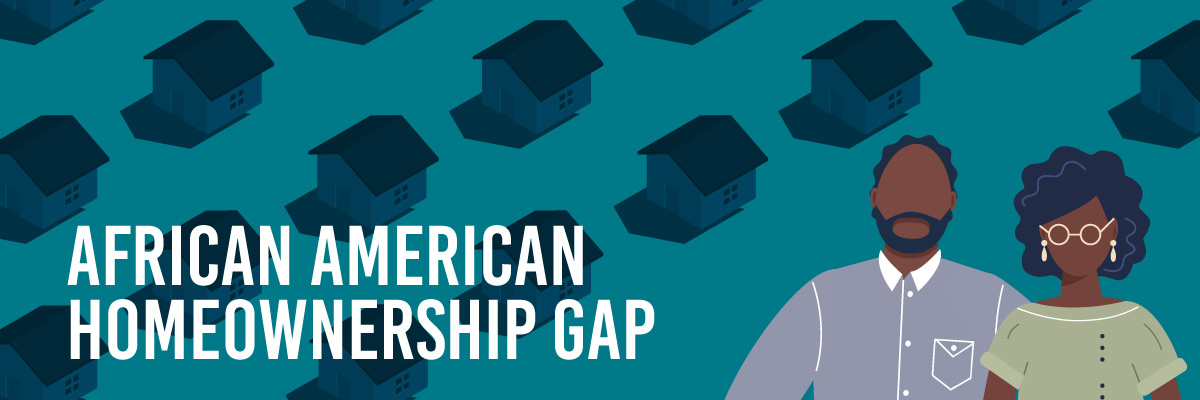Expanding African American Homeownership in Virginia: We Can Do Better
February 7, 2022

As we recognize Black History Month, it is important to remember the challenges that African Americans have faced in achieving homeownership in Virginia. There remains a significant—and persistent—gap between the homeownership rates of White and Black Virginians. The goal of reporting on the state’s homeownership gap is not to focus on the problem, but rather to help all members of the real estate industry—including Virginia REALTORS®—to look for ways to be part of the solution by broadening homeownership opportunities for all.
- Black homeownership in Virginia is lower than it was in 1968, when the Federal Fair Housing Act was enacted. In 2019 (the latest data available from the U.S. Census Bureau), 47.3% of African American households in Virginia were homeowners. In 1968, the state’s African American homeownership rate was higher, at 47.7%.
The White-Black homeownership rate has increased in recent years. In 2000, the White homeownership rate in Virginia was 23 percentage points higher than the Black homeownership rate. In 2019, that gap had increased to 26 percentage points.
There is mixed evidence of whether Black homeownership has expanded or declined during the pandemic. But either way, it is startling that more progress has not been made over the past 50 years.
- The Black homeownership rate is lower than the White homeownership rate in nearly every jurisdiction, but there is a lot of variation across the state. In 2019, there were just eight counties or independent cities where African American households were more likely than White households to be homeowners (out of 133 jurisdictions). The highest Black homeownership rates were in Amelia County, Rockbridge County, and Charles City County.
The biggest White-Black homeownership gaps were in the City of Colonial Heights (52 percentage-point difference), City of Franklin (51 percentage points) and the City of Falls Church (50 percentage points).
The most recent report on Black homeownership from the National Association of Real Estate Brokers (NAREB) highlights some other stark disparities at the national level.
- Black households are less likely to be approved for a home mortgage. For Black applicants, conventional and nonconventional combined, denial rates for home-purchase loans were more than double those of White applicants.
In addition, there is evidence that all borrowers in neighborhoods with more Black families are less likely to be approved for home loans. According to the NAREB report, origination rates for both Whites and Blacks were higher in neighborhoods with a small presence of Black population compared to applicants in neighborhoods that were majority Black.
- Student loan debt is a bigger challenge for Black prospective home buyers. Black households are more than twice as likely to have student loan debt than their White counterparts. Student loan debt can be a big obstacle to homeownership, as it can limit the amount of savings that can be used for a down payment.
The NAREB report did highlight the growing importance of Black households to the home-buying population, particularly the large Black Millennial population.
- Black Millennials account for an important source of new home buyers. Black Millennials accounted for a large share of the new Black home owners over the past year. According to NAREB, this surge is largely attributed to the greater buying power that Millennials have compared to other generations, reflecting a greater ability to save and invest. This has been particularly true among middle-class Black Millennials, who have higher incomes and more stable employment.
The increase in Black Millennial home buying was further supported by low interest rates, reduced personal spending, and the ability to work remotely, which may have contributed to savings (from a reduction in commuting expenses) and facilitated relocation out of high cost cities to more affordable suburban areas or to areas where owning a home is cheaper than renting.
It is clear that access to homeownership has important benefits, from housing and family stability to wealth creation to personal satisfaction. The REALTOR® community plays a pivotal role in helping to connect families with homeownership opportunities. More can be done to ensure that those opportunities are shared broadly.
The Virginia REALTORS® Diversity and Inclusion Presidential Advisory Group, which was formed in 2020, has released a report which includes recommendations designed to help the REALTOR® community in Virginia proactively work to increase Black homeownership. In addition, all REALTORS® should be sure to visit NAR’s Fairhaven and take advantage of the range of resources from NAR on expanding access to homeownership.
If you need any additional homeownership rate data for your local area, please email the Virginia REALTORS® research staff, and we would be more than happy to get you the information you need to help you better understand Black homeownership in your local market.
You might also like…
RESPA & Joint Ventures: What Is Allowed?
By Laura M. Murray - March 6, 2023
We have heard reports that state Attorneys General may be taking an increased interest in certain joint venture arrangements between real estate licensees and settlement companies. Agents may… Read More
DPOR Update: Death or Disability of a Broker
By Laura M. Murray - December 5, 2022
In the 2022 Session, the General Assembly passed a law updating what happens in the event of the death or disability of a sole proprietor or sole broker… Read More
What Do Federal Reserve Rate Hikes Mean for the Housing Market and for Your Business?
By Dr. Lisa Sturtevant - April 4, 2022
In March, the Federal Reserve raised the short-term federal funds rate by 0.25 percentage points. This rate hike was the first time the Fed has raised rates since… Read More